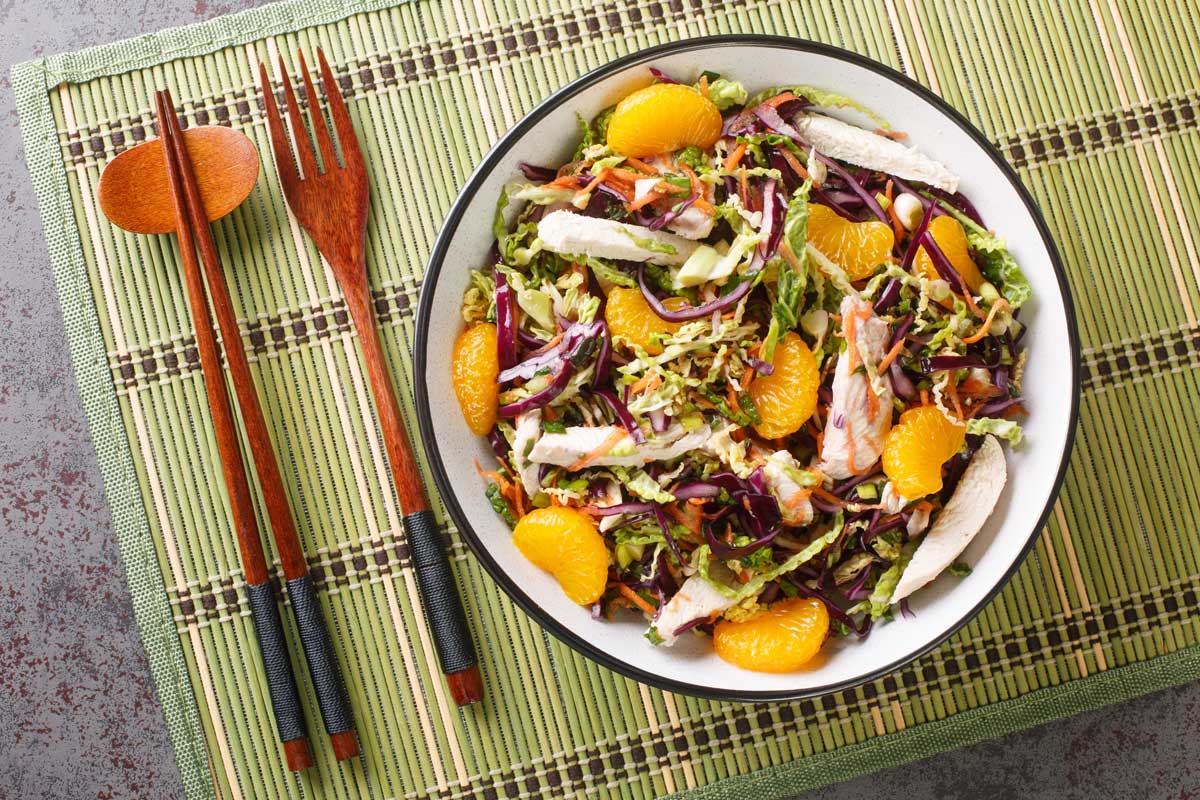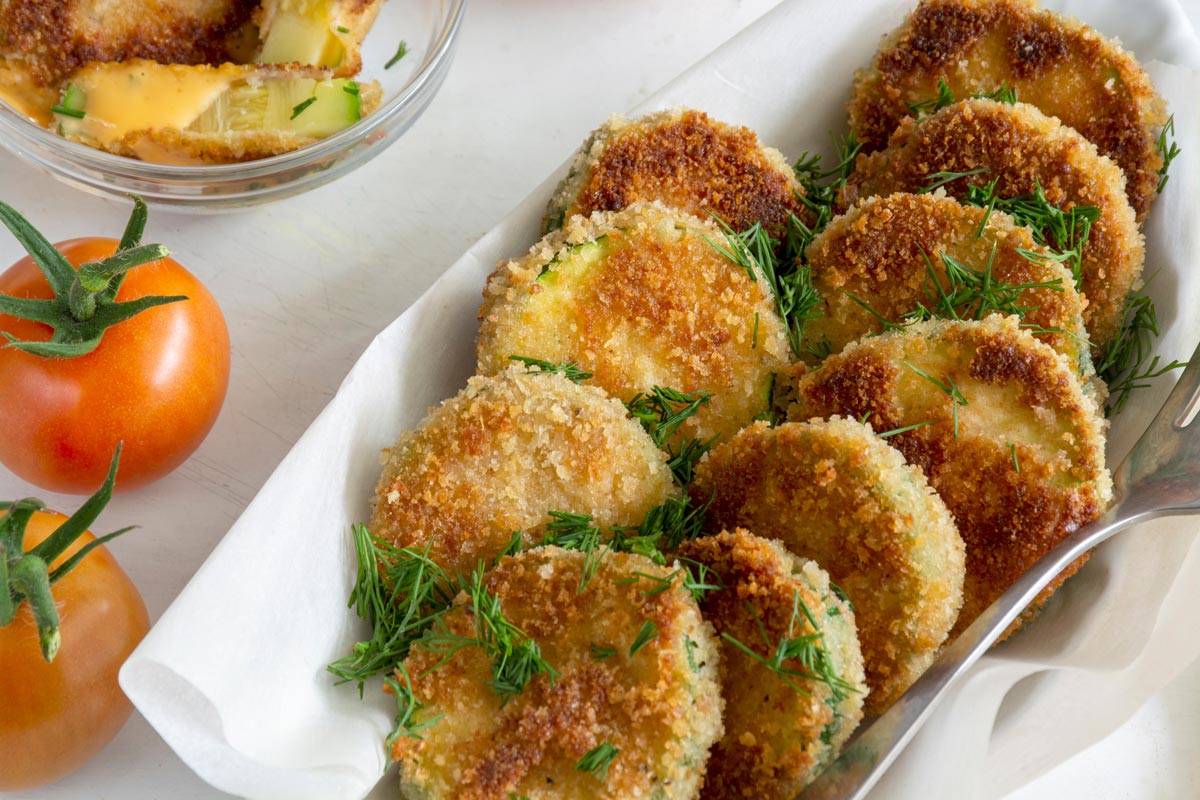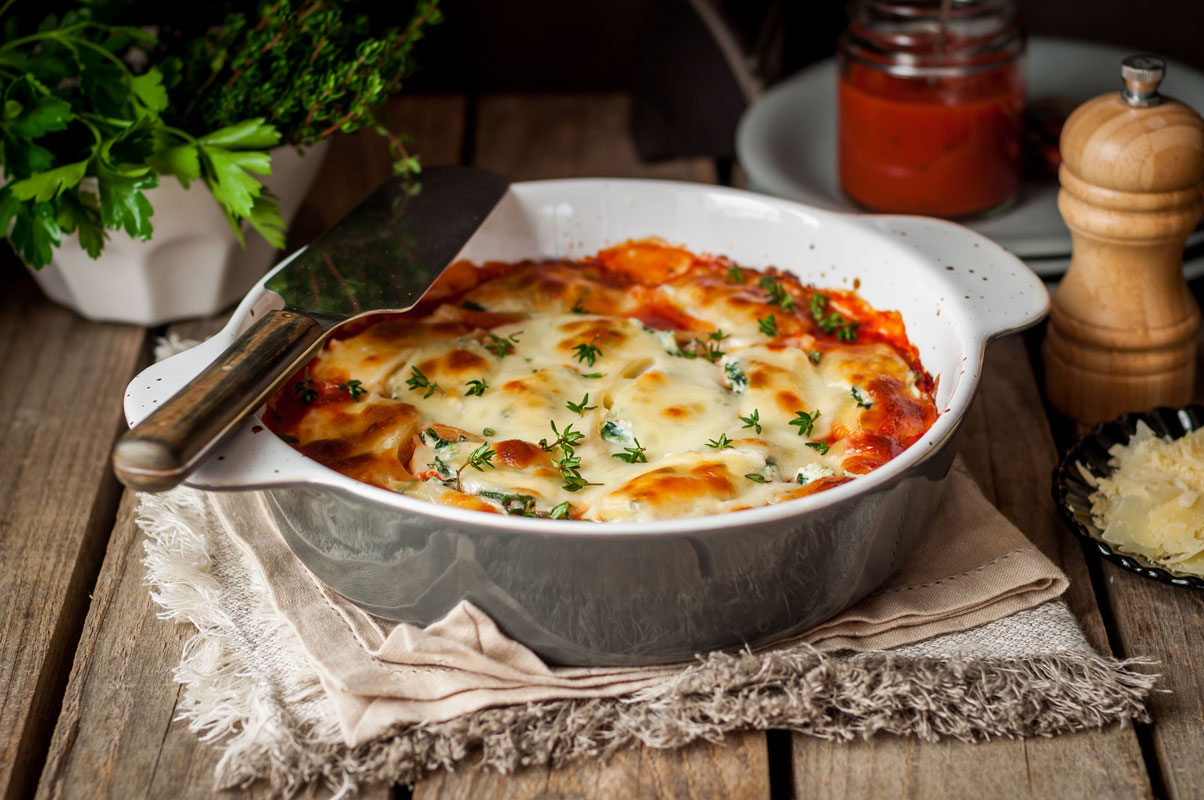Asian Chicken Salad Recipe, Spotlight on Mandarins, Shopping for Asian Ingredients, Another Reason to Get Consistent Shut-Eye and Overcoming “Gymtimidation”
I love getting two meals for the effort of one—so the next time you grill chicken thighs (or steak, for that matter), throw on a couple of extra pieces and turn them into this flavorful salad (with mandarins) the next day. I’m also sharing unique research linking a lack of sleep with changes in the gut microbiome, a body system that’s so influential in determining overall health. And, because days are getting shorter with less opportunity for outdoor fitness, you’ll find expert tips for getting over “gymtimidation,” the term for anxiety over going to the gym!
Asian Chicken Salad
 Asian Chicken Salad
Asian Chicken SaladPopular on restaurant menus since it was created by celebrated Los Angeles restauranteur Sylvia Wu (legend has it that she did so at the request of the superstar of his day, Cary Grant), Chinese Chicken Salad, the inspiration for this recipe, has gone through many incarnations. Instead of crispy noodles and breaded cutlets, my version relies on the rich flavors of the vinaigrette with its mix of Asian staples including garlic chili sauce and fish sauce. If you can’t find mandarins, any variety of orange will be equally delicious. (See Healthy Ingredient Spotlight in this week’s newsletter for more on this petite citrus.)
Ingredients
For the dressing:
- 2 tablespoons extra virgin olive oil
- 1 tablespoon sugar
- 3 tablespoons rice vinegar
- 1 tablespoon freshly squeezed lime juice
- 1 teaspoon garlic chili sauce or Sriracha
- 1 teaspoon fish sauce
For the salad:
- 2 cups napa cabbage, shredded
- 2 grilled chicken thighs, cut into thin slices
- 2 mandarins, any variety, separated into segments
- 2 ounces enoki mushrooms
- 1/2 cup chopped cilantro
Directions
In a small bowl, whisk together the dressing ingredients. Place the cabbage, chicken, and mandarin segments in a large serving bowl, and toss gently. Add the dressing and toss again. Top with the mushrooms and the chopped cilantro.
Yields 2 servings

Healthy Ingredient Spotlight
Mandarins
With 100 cultivars available at different times throughout the year (the most of any citrus), there’s no need to rely on canned segments for Asian salads or snacking. Also called tangerines, mandarins originated in southern Asia, and many types are grown in China today as well as Japan, Spain, Brazil, and the US. You’re also likely to see exotic hybrids, like tangors (mandarin and orange) and tangelos (mandarin and grapefruit or pummelo). Clementines are a type of mandarin readily available in stores and sometimes marketed with a proprietary brand name like Cuties or Halos. Like other citrus, mandarins are a source of vitamin C, potassium, folate, and many essential phytonutrients.

Quick Kitchen Nugget
Shopping for Asian Ingredients
With grocery chains increasing their international offerings, along with the expansion of H Mart, a supermarket-sized Asian food emporium now in 14 states, and online options ranging from Amazon to Sayweee to David Chang’s Momofuku, it’s never been easier to put together the staples needed for many wonderful Asian specialties—Vietnamese, Thai, the various cuisines of China, and more. Though each one is unique, some key items to have on hand are rice vinegar, chili garlic sauce, hoisin sauce, oyster sauce, toasted sesame oil, fish sauce, various dried chiles, black vinegar, and, of course, soy sauce.

For Your Best Health
Another Reason to Get Consistent Shut-Eye
Studies have shown that changes to normal sleep patterns, like what happens when someone works the night shift, disrupt the body’s internal clock and can increase the risks for weight gain, heart problems, and diabetes, all of which are risks linked to changes in the composition of microbes in the gut. But our biological rhythms can even be affected by small inconsistencies in sleeping patterns, according to a new study published in the European Journal of Nutritionby researchers from King’s College London in the UK and ZOE, a personalized nutrition company.
They found that irregular sleep patterns are associated with harmful bacteria in your gut, specifically a link between “social jet lag”—the shift in your internal body clock when your sleeping patterns change between workdays and free days—and diet quality, diet habits, inflammation, and gut microbiome composition. That’s important because the composition of gut microbes may negatively or positively affect your health by producing toxins or beneficial metabolites—because the microbiome is influenced by the food you consume, the diversity of your gut is adjustable.
Wendy Hall, PhD, senior author and nutritional scientist at King’s College London, explains, “We know that major disruptions in sleep, such as shift work, can have a profound impact on your health. This is the first study to show that even small differences in sleep timings across the week seem to be linked to differences in gut bacterial species. Some of these associations were linked to dietary differences, but our data also indicates that other as yet unknown factors may be involved. We need intervention trials to find out whether improving sleep time consistency can lead to beneficial changes in the gut microbiome and related health outcomes.”
While studies into the association between social jet lag and metabolic risk factors have been done in populations with obesity or diabetes, participants in this research were mainly lean and healthy, with most getting more than seven hours’ sleep per night throughout the week. Researchers found that just a 90-minute difference in the timing of the midpoint of sleep—the halfway point between sleep time and wake-up time—was linked to differences in gut microbiome composition, and that having social jet lag was associated with lower overall diet quality, higher intakes of sugar-sweetened beverages, and lower intakes of fruits and nuts, which may directly influence the abundance of specific microbiota in your gut.
The research also found that three of the six microbiota species more abundant in those with social jet lag have unfavorable associations with health. These microbes are linked to poor diet quality, indicators of obesity and cardiometabolic health, and markers in the blood related to higher levels of inflammation and cardiovascular risk. “Maintaining regular sleep patterns, so when we go to bed and when we wake each day, is an easily adjustable lifestyle behavior we can all do that may impact your health via your gut microbiome for the better,” says Dr. Sarah Berry, PhD, associate professor in the Department of Nutritional Sciences at King’s College London.

Fitness Flash
Overcoming “Gymtimidation”
Whether self-conscious about their appearance, concerned about their ability to keep up with others, or worried that they’ll feel awkward, there are many reasons that keep people from working out at a gym—and those reasons can exert a more powerful influence than the desire to reap all the benefits of exercise. Writing for ACE, the American Council on Exercise,Dr. Erin Nitschke, NFPT-CPT, NSCA-CPT, ACE health coach, fitness nutrition specialist, and therapeutic exercise specialist, shared her ideas to help people conquergymtimidation, a word being used to refer to anxiety over exercising in a gym, and suggests trying a few of them to see what works best for you:
- Look for a small gym that might be less intimidating or work out at non-peak hours when it’s less crowded.
- Go with a buddy, so you can support each other.
- Invest in comfortable workout wear so you’ll worry less about your appearance.
- Consider a personal trainer, via on-site or virtual instruction, to feel more confident about your form and get targeted guidance.
- Keep a journal and celebrate your accomplishments.
Dr. Nitschke adds that it will take time to get the upper hand on gymtimidation, but as with any fitness goal, you can achieve it if you stick with it.
Get More Recipes In Your Inbox!


